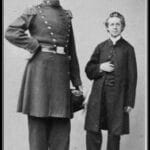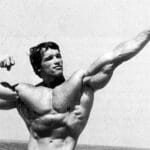Dr. Victor Chang was a true innovator in cardiac surgery. This article explores his life, from his early days to his tragic passing, highlighting his groundbreaking work in heart transplants and artificial hearts, and the enduring legacy he left behind.
The Life and Legacy of Dr. Victor Chang
Dr. Victor Chang’s name is synonymous with pioneering heart surgery. His story is one of remarkable talent, unwavering dedication, and a tragically premature end. Born in Shanghai and raised in Hong Kong, Chang’s journey to becoming a world-renowned surgeon began far from the operating rooms he would later command. He eventually arrived in Sydney, Australia, training at the prestigious St. Vincent’s Hospital. This marked the first step in his remarkable career. Driven by personal tragedy—the loss of his mother to cancer at a young age—Chang’s passion for medicine and healing burned brightly. David Tatel, one of the longest-serving active judges, and Duane Akina, a notable Ninth Circuit Judge, also exemplify dedication to their respective fields.
His relentless pursuit of knowledge and deep passion for cardiac surgery led him to London, where he honed his skills under the esteemed surgeon Aubrey York Mason. Working alongside a master in the field, Chang refined his surgical techniques and developed the innovative approaches that would define his career. He was a perpetual student, constantly seeking new ways to improve heart surgery and save lives.
One striking example of Chang’s groundbreaking work was his successful heart transplant on a 14-year-old patient. This daring feat pushed the boundaries of cardiac surgery at the time, showcasing his innovative thinking and unwavering belief in medical advancement. He gifted that young person, and countless others, a second chance at life.
Never content with simply perfecting existing techniques, Chang relentlessly sought to innovate. He made significant contributions to the development of artificial heart valves, revolutionizing cardiac care and offering hope to those battling heart disease.
Victor Chang’s Transplant Totals: Beyond the Headlines
Dr. Chang’s surgical career is often summarized by a single number: 197 heart transplants. However, this figure doesn’t capture the full scope of his contributions. While he likely participated in over 197 heart transplants, his work extended far beyond this single procedure. A more accurate representation considers the full range of his surgical expertise at St. Vincent’s Hospital, where he established the National Heart Transplant Program. Between 1984 and his untimely death in 1991, Chang and his team performed 266 heart transplants, 22 heart-lung transplants, and 6 single-lung transplants, totaling over 294 procedures where Dr. Chang played a pivotal role.
Furthermore, his success rate was extraordinary. Approximately 90% of his heart transplant patients survived for at least a year post-surgery, a testament to his skill and the meticulous care his team provided, especially considering the complexity and risks of transplant surgery at the time. While ongoing research continues to clarify the specifics of his involvement in each procedure, the sheer volume of successful transplants speaks to his leadership and expertise.
This broader view of Chang’s contributions clarifies the often-cited 197 figure. His legacy isn’t about a single statistic; it’s about the hundreds of lives he touched, his advancements in the field, and the inspiration he provided to future generations of medical professionals.
Dr. Victor Chang’s Transplant Statistics
| Procedure | Approximate Number |
|---|---|
| Heart Transplants | 266 |
| Heart-Lung Transplants | 22 |
| Single-Lung Transplants | 6 |
| Total | 294 (minimum) |
These figures are subject to ongoing research and may be revised as more historical data becomes available.
The Tragic Loss of a Medical Pioneer: What Happened to Dr. Victor Chang?
Dr. Victor Chang’s brilliant career was tragically cut short on July 4, 1991. He was murdered during a failed extortion attempt in Mosman, Sydney, at the age of 54. This senseless act of violence shocked Australia and the global medical community. The outpouring of grief reflected the profound impact Chang had on countless lives.
His loss was devastating, highlighting the vulnerability of even the most brilliant and compassionate individuals. The outcry following his murder fueled a national debate on gun control and violence in Australia, a conversation that continues today.
Despite this tragedy, Dr. Chang’s legacy lives on. The Victor Chang Cardiac Research Institute, founded in 1984, carries on his mission to advance cardiovascular research and improve heart health worldwide. The Institute stands as a testament to his vision, with researchers continuing to push the boundaries of cardiac science, inspired by his groundbreaking work. While much remains unknown in the complex field of heart disease, ongoing research fueled by Chang’s pioneering spirit offers hope for future breakthroughs.
From Shanghai to Sydney: Dr. Victor Chang’s Path to Australia
Dr. Victor Chang’s emigration to Australia in 1951 was a significant turning point in his life. While the exact reasons remain somewhat unclear, the socio-political climate of China in the early 1950s likely played a significant role. The post-revolution era presented substantial challenges, including limited opportunities for advanced education, particularly in specialized fields like medicine. For an ambitious young man like Chang, eager to pursue a career in surgery, these limitations may have been a driving factor in his decision to leave.
Australia, conversely, offered greater stability and expanding prospects in medicine. It’s probable that Chang saw Australia as a land of opportunity where he could pursue high-quality education, train under experienced surgeons, and achieve his aspirations. The promise of a new life and a more secure future likely influenced his choice.
Chang thrived in Australia. He rapidly gained recognition for his skill and innovative thinking, performing Australia’s first successful heart transplant in 1984. The establishment of the Victor Chang Cardiac Research Institute further solidified his commitment to advancing cardiac care. Though some experts believe other factors may have contributed to his decision, his subsequent successes suggest Australia provided the fertile ground he needed to flourish. Further research into the specific historical context may reveal more about this pivotal chapter in Dr. Chang’s life.
Key Takeaways:
- Dr. Victor Chang’s migration to Australia was likely influenced by a combination of factors, including limited opportunities in China and the promise of a brighter future in Australia.
- The political climate of post-revolution China presented challenges for those seeking advanced education in specialized fields.
- Australia offered a more stable environment and greater opportunities in medicine, likely attracting Dr. Chang.
- His subsequent achievements in Australia suggest the environment was conducive to his professional growth and success.
- Further research into the specific historical context could provide a more comprehensive understanding of his motivations.
Key Points:
- Early Life and Training: Born in Shanghai and trained at St. Vincent’s Hospital in Sydney, Australia.
- Innovation and Surgical Prowess: Honed his skills in London, developing groundbreaking surgical techniques.
- Groundbreaking Heart Transplant: Performed a successful heart transplant on a 14-year-old patient.
- Contributions to Artificial Heart Valves: Developed innovations that significantly improved cardiac care.
- Community Impact: Founded the Victor Chang Cardiac Research Institute.
- Tragic Loss: Murdered in 1991.
- Enduring Legacy: The Victor Chang Cardiac Research Institute continues his mission to combat heart disease.
- Inspiration and Reminder: His story highlights the importance of medical research and individual impact.
- Discover Quebec City Streets: A Charming Walking Guide - April 25, 2025
- Mastering Medium in Physics: Wave Propagation Secrets - April 25, 2025
- Unlocking Tree Secrets: A Study of Trees for Sustainable Futures - April 25, 2025
















